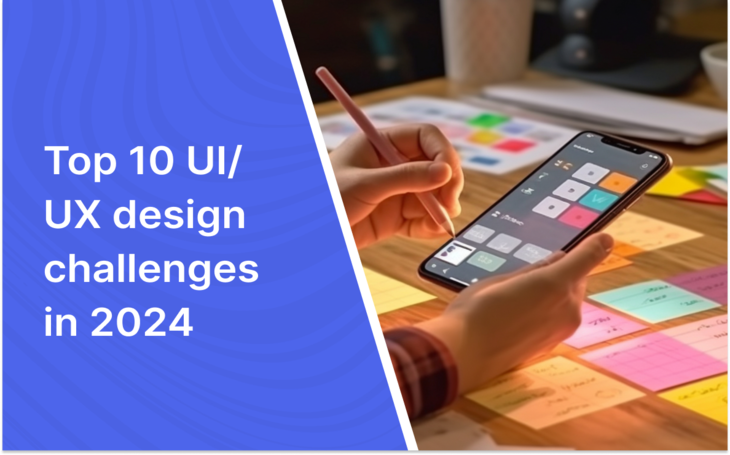
Someone rightly said that design is an investment, not an expense.
If you want to provide meaningful and satisfying customer experiences, this is where UI/UX design comes in. When we say that visuals look eye-catching to our eyes, we are referring to UI/UX design.
In fact, a user experience is a pivotal element that will ensure whether a user is likely to make a purchase or not.
So, a UI designer needs to know the common UI/UX design challenges.
A study from the Interaction design foundation suggests that investments in UX improve the ROI of business in 4 ways-
- Increases the overall revenue of the business
- Improves customer satisfaction
- Reduces development waste
- Reduces the risk of building the wrong product
The chart below reveals that companies that make UX investments will likely grow in the long run.
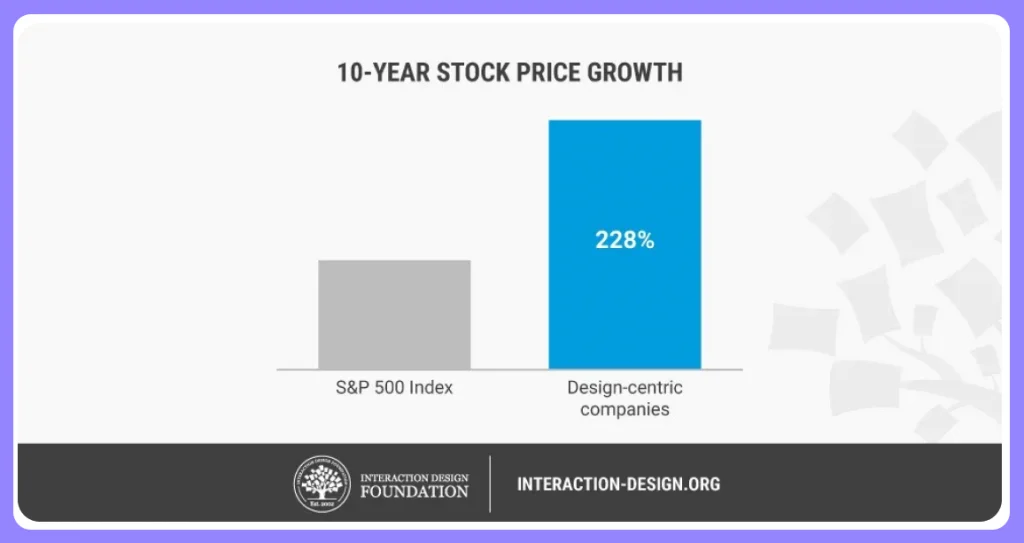
This blog will uncover some UI/UX design challenges that create hurdles for businesses to provide a better user experience.
Top 10 UI/UX Design Challenges In 2024
1. Reducing The Gap Between Design and Development
One of the biggest UI/UX design challenges is closing the design and development team gap. It’s an undeniable fact that both designers and developers contribute to the successful development of a product.
You might have heard this saying – Designing is incomplete without development, while development is useless without design.
Therefore, the design and development team need to work in close collaboration.
A UX designer and a developer are 2 roads apart because a designer always thinks of the user journey, while a developer’s motto is to make the website/app technically convenient for users.
So, if there are no clear lines of communication between developers and designers, it leads to misinterpretations and delays in delivery, resulting in poor user experience.
Thus, a lack of communication and knowledge gaps creates a product no one likes to invest in.
2. Budget and Time Restrictions
Budget and design are the 2 indispensable elements that affect the entire development process.
Think of a situation wherein the designer has to work under time constraints, and they are underpaid.
What would happen then?
Of course, it will negatively impact his creativity, and they will do poor work.
At the same time, many clients tend to undervalue the designer’s work, thinking that creating a button or changing the gradient can be done within a matter of minutes.
When creating lucrative designs, every color layer serves a different purpose. More importantly, every minor change in design costs more resources (both time and money).
3. Not Conducting Research
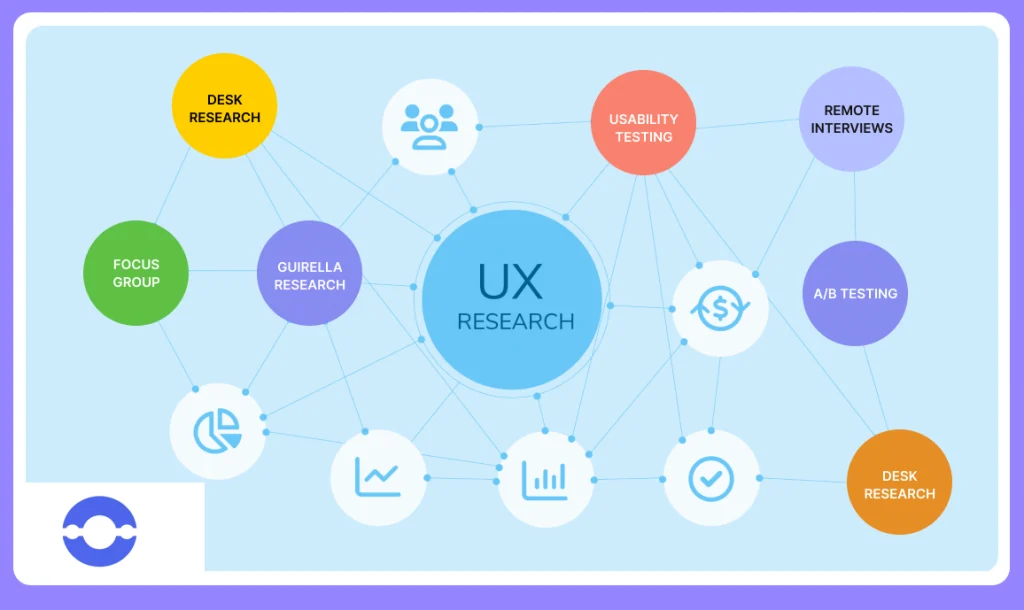
UX designers are likely to fail if they have not conducted user research.
If you think of skipping the research process and believe that decision-makers are already aware of their customers, then it would not be a viable option for you.
UX without user research is not UX. It means if your organization does not include users in the designing process, you will create interfaces that are likely to fail.
With user research, you will know what pain points your design should address. Consider doing user research because it improves the designs and fulfills the user’s needs.
Remember! “We cannot assume that other people will think and behave the same way we are thinking”. Hence, we must conduct user research to gain deep insights into our target audience.
4. Android Fragmentation
The biggest challenge for UX designers is creating consistent designs across devices and screen sizes.
You might think that app design is app design, but there is a conventional thought in the mind of developers who write code for Android and iOS.
Designing exquisite and attractive designs for iOS apps is easier than making Android apps.
A major reason behind this is Android fragmentation which means that developers when coding for iOS apps, deal with a limited number of screen resolutions.
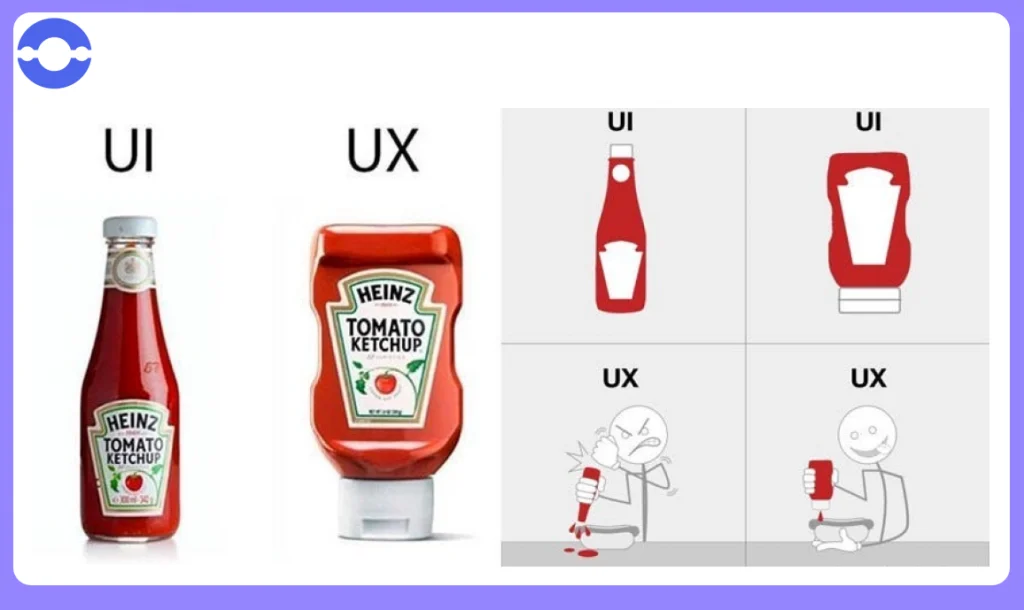
The co-founder of the Karma app once said – Android devices come in various screen resolutions, shapes, and sizes.
Thus, designing for Android devices is more time-consuming than iOS devices, making the development process slower.
In such cases, you should stay updated with the latest updates and follow Google instructions.
5. Focusing On One Problem
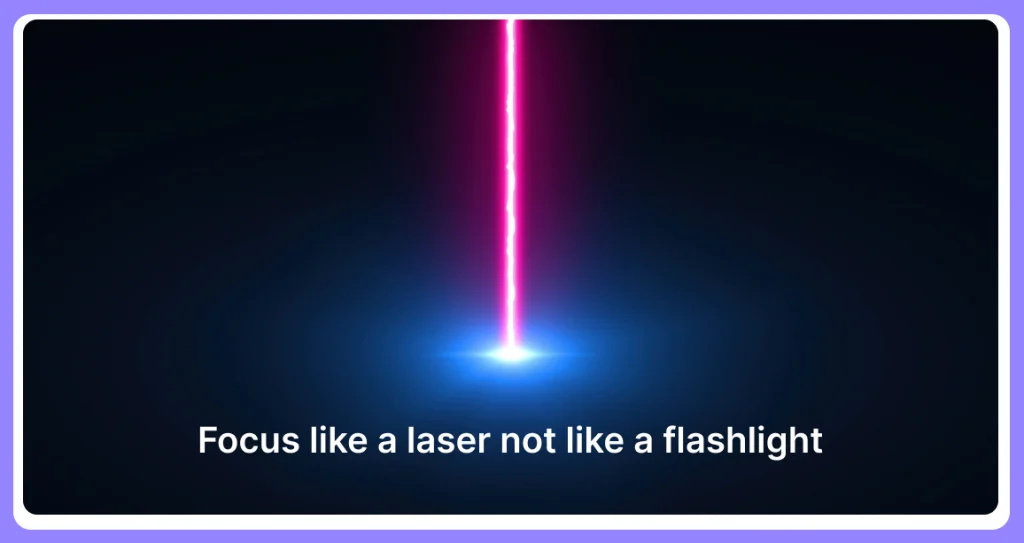
UX designers are problem solvers and creative nerds, which means logical and creative thinking comes naturally to them.
The more insights they uncover, the more issues are revealed.
The eagerness to solve those problems might distract the designer from doing the current task and makes it difficult for him to prioritize the right problem.
Moreover, as the time and budget allocated for the project are limited, such unwanted distractions lead to further delays.
As a UX designer, it’s your responsibility to focus on the right problems and ensure that you are on the same page with the rest of the team.
So, keep an eye on the bigger picture, the bigger goal you want to solve.
6. Dealing With Consumer Psychology

Understanding consumer psychology helps the UI/UX designer to create compelling designs.
Designing products that resonate with customers requires designers to get a deeper insight into consumer psychology.
Several psychologists suggested that users act based on psychological patterns, and this principle also applies to the digital world.
For this, UX designers don’t need to conduct extensive research from scratch; they need to understand the UX psychological principles to create products that users will love and find easy to use.
A good UX designer has his creative juices flowing in his mind and aims to change the world even if the world doesn’t need to be changed.
Most UX designers fail to create a successful product in the market because they need to gain knowledge in consumer psychology.
Don Norman (the director of the design lab at the University of California) says –
“We design for the people the way they are, not the way we wish them to be because half the people in the world are below average”.
Therefore, to be a great UX designer, you need to be a great reader of the human mind, which many designers are not.
7. Juggling Between Design Solutions and Business
As you know, time and money are mutually connected; the same applies to design and business. The product development strategy and design should align with the business goals.

UX designers have their design mindset and strive to create better-quality products. At the same time, businesses, on the other hand, try to earn as much profit as possible.
To reach a consensus, businesses, and designers must ensure they are on the same page. So, UX designers should focus on designing products that aim to increase user satisfaction, which builds customer loyalty.
Thus, an increase in customer satisfaction results in an increase in business revenue.
8. UX is Often Undervalued Within The Organization
A common UI/UX design challenge is that upper management undervalues the work of designers and ignores their suggestions, and it becomes intimidating for them as if they are doing nothing.
Sadly, many companies fail to understand that a great design often results in great experiences.
There are many times when an experienced designer must explain user research’s importance to the senior team leaders.
So, organizations need to pay attention to the importance of UI/UX designs if they want to create user-centered products and experiences.
9. Creating a Balance Between Aesthetics, Functionality, and Accessibility
Most UX designers think that UX is about creating pretty menus and rounded buttons, while it’s not always the case.
It’s more about creating an aesthetic design that wins the heart of customers and provides a better user experience.
Secondly, functionality matters the most, which means that your designs should be accessible by everyone and inclusive for all users regardless of their abilities, including designing products for sensory impairments, neurological impairments, etc.
So balancing aesthetics, functionality, and accessibility creates effective designs that increase user experience. The next time you think of creating a decent design, look at it from the perspective of a diverse user base.
10. Keeping Up To Date With Design Trends

Another UI/UX design challenge designer often face is that UX design is a fast-changing industry, and staying updated with best practices is a MUST.
Adopting the latest trends (dark mode, animations, bold typography) in such industries is about knowing new things for you and harnessing those techniques to create better experiences for end users.
But that doesn’t mean you will keep a finger on every trend because you saw online that it’s trending. Instead, you should be able to chase those trends that align with your work.
Wrapping Up
As technology changes every day, the expectations of customers won’t remain the same.
With expectations come challenges for UI/UX designers. Of course, the designer’s job is to create better designs and let customers choose their products over others.
However, you must avoid getting stuck with roadblocks that can make things bad for you.
As designers work with the business and technical side of things, they need to be aware of what customers need and, at the same time, create designs that bring revenue for the business.
You no longer need to search for creative UI/UX designers because we got you.
At BigOhTech, having an experience of 9+ years, we are here to create standout UI/UX designs that increase your conversion rate and give you a positive ROI for your business.
We provide you with everything in one box, starting with UX research, UI design, UX design, creating a branding strategy, and conducting usability testing.
So, leverage the expertise of our UI/UX designers to solve your UI/UX design challenges and supercharge your brand visibility now.




